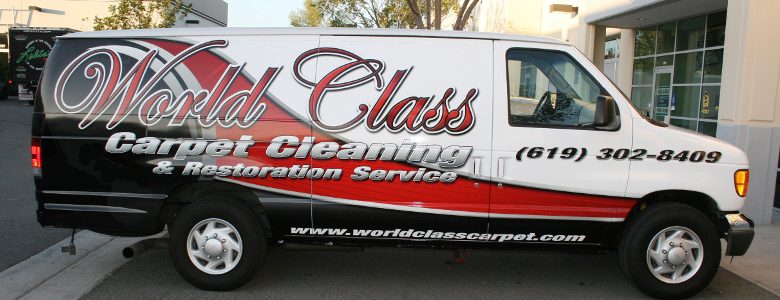
When it comes to wrapping a concave surface, there’s a time for pressure and there’s a time for weaving. And if you don’t know what I’m talking, read on.
In the last few years the wraps industry has changed-for the better. The area of change we’ll key in on is the effect that thinner materials have had on the application of wraps here in North America.
With the availability of high-quality media that is thinner, the knee-jerk reaction is to go faster and pressure-in the concaved areas without any negative consequences. Faster, yes, but pressuring into concave surfaces is not without consequences-unless you use the proper techniques. In this article we’ll review two techniques to use on those concaved areas that will prove to stand the test of time.
Prepping
Cleaning and prepping is the key to any success in wrapping a surface, so let’s start there. Use isopropyl or denatured alcohol to make your surface squeaky clean, further cleaning may be necessary as dirt, grime and contaminates can build up those nooks and crannies.
Tools
- Wrap Gloves-Preferably a pair that is specifically made for the task. The WrapGlove brand is perfectly suited for these thinner medias. They are slideable, non-static, lint-free gloves that conform to the hand very tightly.
- Water-A spray bottle of water will help us apply water to the intended surface thereby acting as a lubricant, enabling our hands to slide across the surface without drag.
- Squeegee-Teflon squeegee with micro fiber on one side, the WetEdge is specifically made for these types of applications.
- Torch or Heat Gun-Either or will do. (A controllable heat source).
- Media-For this article I am using Avery MPI 1005EZ/RS with DOL 1360 (this laminate is 1.3 mils). This media is thinner due to the 1.3 mil laminate, so we can justify pressuring in those intermediate concave areas, but it’s still not thin enough to warrant the pressuring in of hard transitions. For the hard transition areas, we’ll practice the weaving technique.
1) First, determine the complexity of the concaved areas you’re going to work with. There are three basic types of concaved surfaces we’ll encounter when installing vehicle wraps. For the purposes of demonstration, here are the three we’ll look at today: Mild, Intermediate and Hard.
Mild Concave: Heat & Pressure Technique
The first and easiest concave curve to master is the Mild surface.
2) Note that this horizontal application requires that we start our installation of this panel from the top working from left to right down the panel. Also note that we have bridged the mild concave area in order to maintain our style-lines in the graphic without distortion on and below this area. The following steps should help demonstrate how we efficiently Heat and Pressure-in this area
3) Define the Area: We’ve defined our area and have insured that we have openings at each end for air to escape. We now wet the palm of our glove(s) and also the intended surface we’ll be pressuring.
4) Heat Graphic: Heat graphic to a temperature that softens the media (not too much) but just enough for it to flow into the area with slight pressure. (Note:This will require some practice by you to determine what’s enough heat and what is not)
5a) First move: Start in the middle and work toward the right all the way to finish.
Hard Concaved Surface: The Weaving Technique
Areas like this can and will lift after application if not properly installed! The best way to handle complex concaved surface like this is to install using the Weaving method. This method, though time-consuming, is quite easy to perform and is good insurance against lifting in the long run.
I have found that it’s best to look at these types of surfaces in parts (multiple surfaces) within the concaved area. I treat each of these surfaces as its own individual areas of application.
7) Defining the area: No water is used here; this is all about the squeegee. Whether working up or down into these areas you cannot get ahead of yourself. You must treat each of these surfaces within the concaved area as its own application. In this example, the area pictured includes four surfaces.
8) Start the First Surface by defining the first edge from left to right until the entire first surface is complete. Do not apply anything below this edge until this is complete.
9) The Second Surface (inner edge) is now applied from left to right until complete.
10) The Third Surface (inner edge) is now applied from left to right until complete.
11) The Forth Surface, or final edge, now needs to be defined to complete the Weaving procedure.
Intermediate Concaved Areas
These are areas that still have a hard transition to the next surface but may only be a step up or down once as opposed to the multiple-surface curves we just reviewed.
12) Intermediate concave curves can be completed using both of the methods discussed above. However, the heat and pressure method can fail here as well, leaving trapped air behind. So, when in doubt-always weave these surfaces in as well.
13) Post Heating:
Finally, the only thing left to do is to post-heat your applications. Did I say Post-heat? You Betcha! This final procedure is surely one of the most important tasks you’ll perform. It ensures that you’ve broken the memory of the vinyl in those suspect areas, and in turn, helps to speed up the curing process.
14) So there you have it-a completed concave curve application that is warrantable and will stand the test of time. Hopefully these tips and procedures will help you insure a more profitable future.